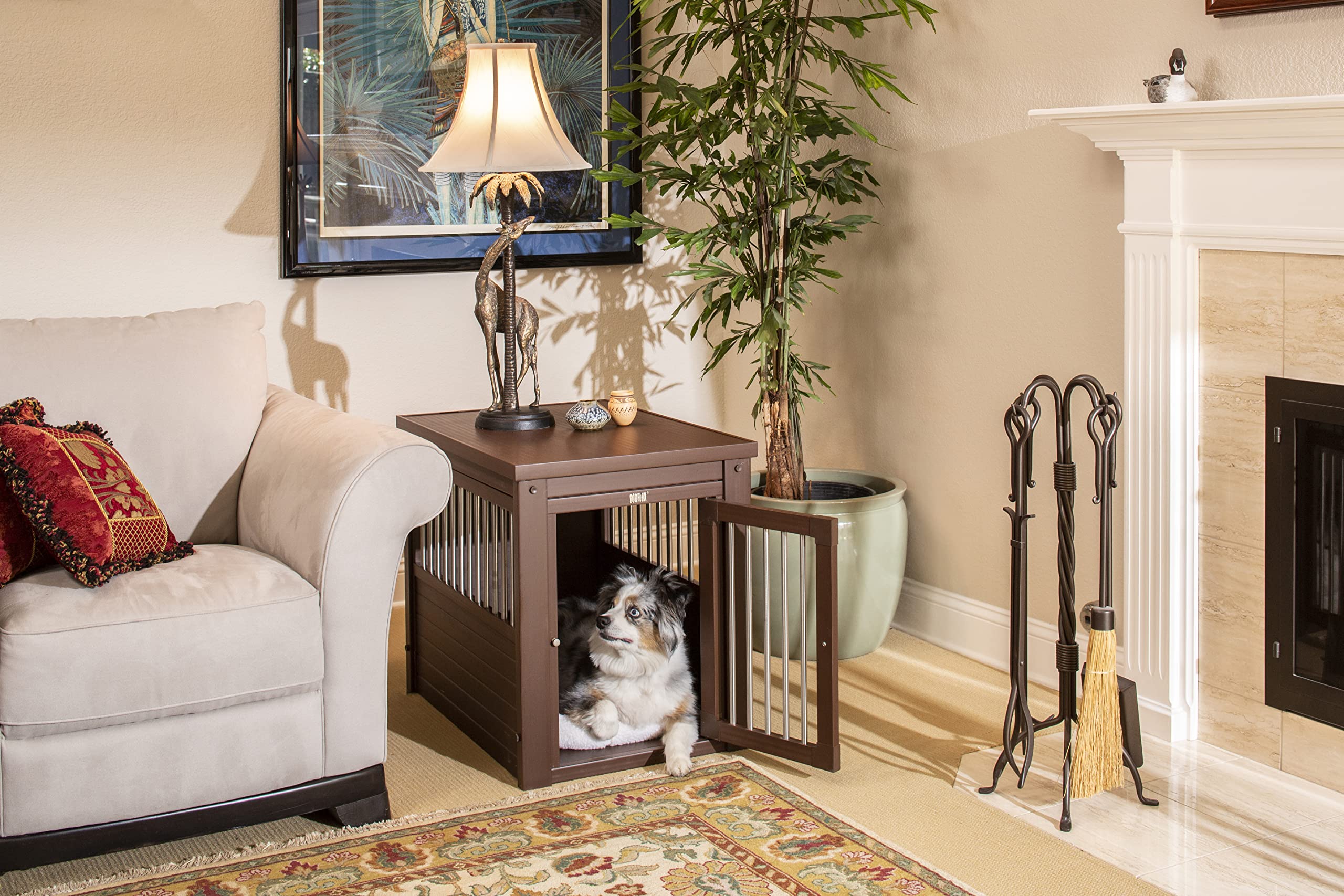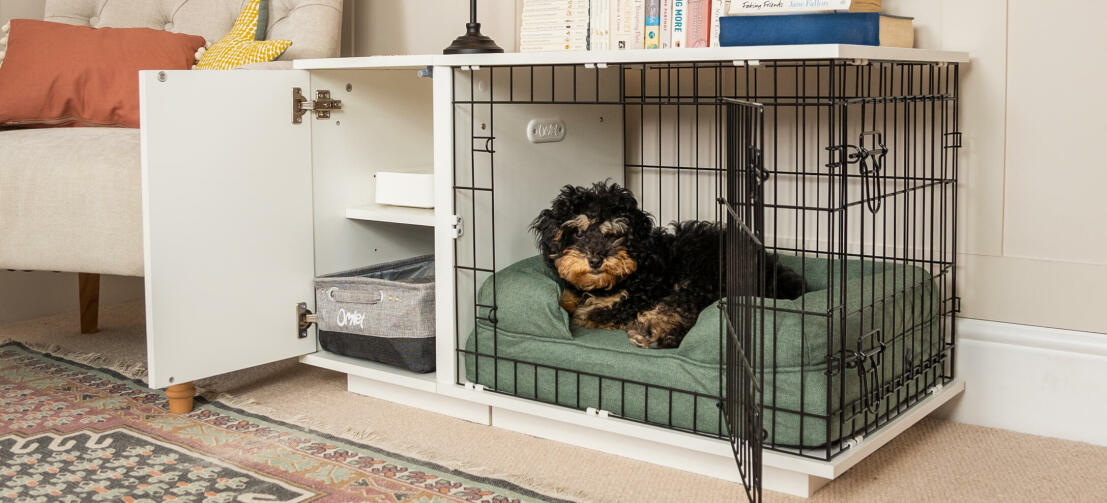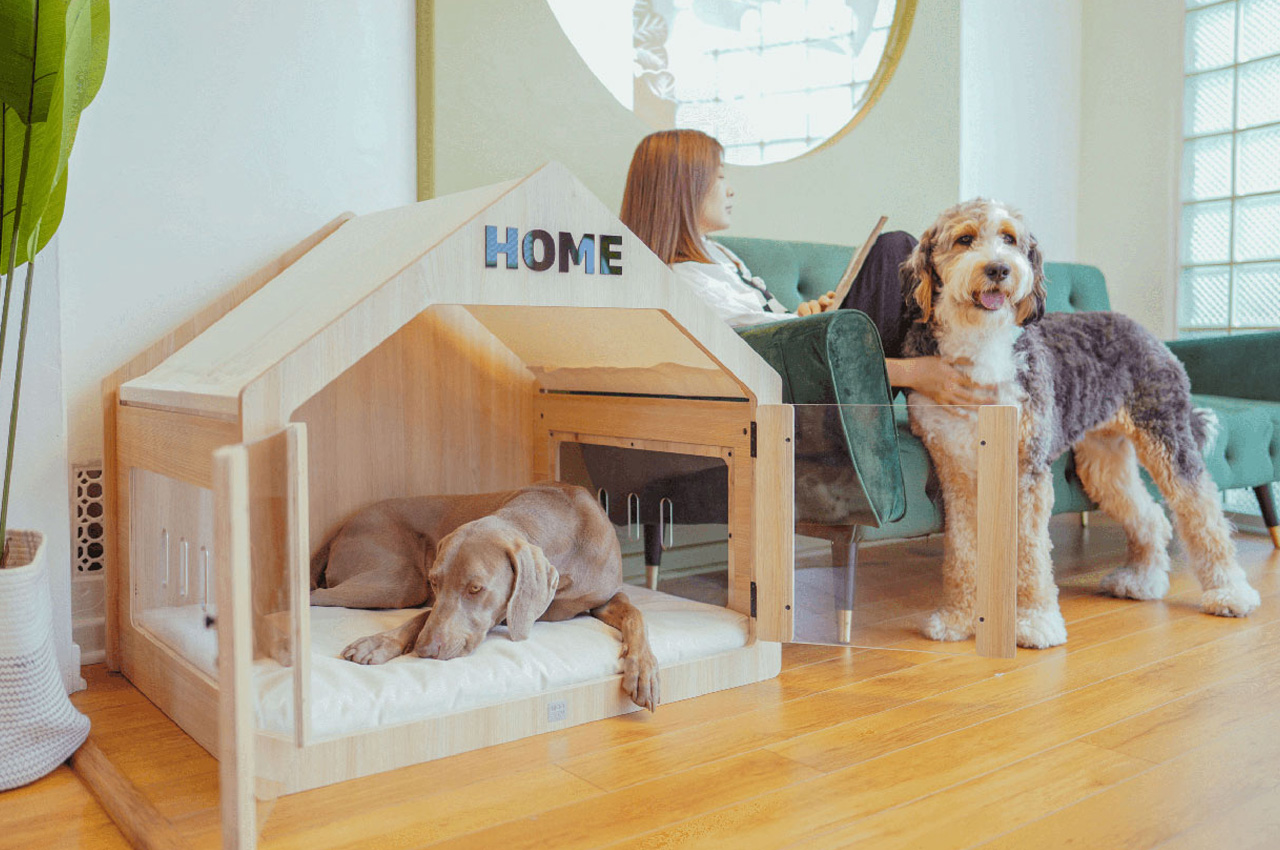Many dog owners find themselves faced with the decision of whether to provide their furry friend with a dog house or a crate. Both options have their advantages and disadvantages, and choosing the right one for your dog can greatly impact their overall well-being and comfort. In this essay, we will explore the differences between dog houses and crates, discussing their benefits and drawbacks, and ultimately helping you make an informed decision for your canine companion.
Dog House

A dog house is a structure typically placed outdoors that provides shelter and protection for dogs. It serves as a safe haven for dogs to retreat to during inclement weather or simply to relax and rest. Dog houses can be made from various materials, including wood, plastic, or metal, and they come in different sizes to accommodate different breeds.
♦ Pros of a Dog House
Shelter: One of the primary advantages of a dog house is the protection it offers. Dogs, especially those that spend a significant amount of time outdoors, need a dedicated space where they can seek shelter from extreme heat, cold, rain, or snow. A dog house provides a comfortable and secure environment for them to seek solace during adverse weather conditions.
Independence: Having a dog house allows your furry friend to have their own space and a sense of independence. Dogs, like humans, enjoy having their own personal area where they can relax without feeling confined or restricted.
Outdoor Experience: A dog house allows dogs to enjoy the outdoors while still having a designated area that belongs to them. It allows them to explore their surroundings, scent mark, and engage with nature, promoting mental and physical stimulation.
♦ Cons of a Dog House
Limited Use: Dog houses are primarily suitable for outdoor use. If you live in an apartment or a house without a yard, a dog house may not be a viable option for you. Additionally, some dogs may be uncomfortable staying outside for prolonged periods, making a dog house less practical.
Maintenance: Dog houses require regular upkeep, including cleaning, repairing, and weatherproofing. Depending on the materials used, dog houses may be susceptible to wear and tear over time. It is essential to consider the maintenance requirements before opting for a dog house.
Crate

A crate, also known as a dog cage or kennel, is an enclosed space that provides a secure and confined area for dogs. Crates are typically made from wire, plastic, or fabric and come in various sizes to accommodate different breeds. They are primarily designed for indoor use.
♦ Type of Material Used
Wire Crates: Wire crates are a popular choice due to their durability and visibility. They provide good ventilation and allow your dog to see their surroundings. However, some dogs may be able to escape through the wires or injure themselves by chewing on them. Ensure that the wires are spaced appropriately to prevent any escape attempts or physical harm.
Plastic Crates: Plastic crates are sturdy and provide a more den-like environment for dogs. They are often preferred for travel as they are lightweight and have a solid construction. However, they may not offer as much ventilation as wire crates, so it is essential to choose a crate with sufficient ventilation holes to ensure proper airflow.
Fabric Crates: Fabric or soft-sided crates are lightweight and easily collapsible, making them convenient for travel. They are typically made from durable fabric and have mesh panels for ventilation. However, fabric crates may not be suitable for dogs that tend to chew or scratch, as they can easily damage or escape from them.
♦ Pros of a Crate
Safety and Security: Crates offer a safe and secure environment for dogs, especially when unsupervised or during times of anxiety or stress. They function as a den-like space that provides dogs with a sense of security, helping to reduce anxiety and prevent destructive behavior.
House Training: Crates are commonly used as a tool for house training puppies or dogs with behavioral issues. Dogs have an instinctive desire to keep their living area clean, and crates can aid in teaching them bladder and bowel control, as they are less likely to soil their sleeping space.
Travel Convenience: Crates are portable and can be easily transported, making them useful for travel or visits to the veterinarian. They provide a familiar and secure space for dogs, reducing stress during transportation.
♦ Cons of a Crate
Confinement: Crates limit a dog’s movement and can potentially restrict their natural behaviors, such as stretching, roaming, or playing. Prolonged confinement in a crate without proper exercise and mental stimulation can lead to restlessness and frustration.
Training Required: Using a crate effectively requires proper training and gradual acclimation. Dogs may initially resist being confined to a crate and may exhibit signs of distress. It is crucial to introduce the crate positively and provide ample training to ensure the dog sees it as a safe and comfortable space.
Factors to Consider in Decision Making

When deciding between a dog house and a crate for your furry companion, there are several important factors to consider. These factors will help you make an informed decision that suits your dog’s needs and your lifestyle.
- Size and Breed of the Dog: The size of your dog and its breed are crucial factors to consider. Larger breeds may require a spacious dog house to accommodate their size comfortably. Smaller breeds, on the other hand, may feel more secure and cozy in a crate that provides a snug den-like environment.
- Lifestyle and Activities: Consider your lifestyle and the activities you engage in with your dog. If you frequently travel with your dog or participate in outdoor activities such as camping or hiking, a crate can be convenient as it is portable and easy to transport. A dog house, on the other hand, may be more suitable if your dog spends a significant amount of time in the backyard and needs a dedicated space for relaxation.
- Training Goals and Behavior Management Needs: Think about your training goals and behavior management needs. Crates are often used for house training as they can help establish boundaries and prevent accidents. They can also be helpful for managing separation anxiety or destructive behavior. Dog houses, on the other hand, allow for more freedom of movement and may be better suited for dogs that are already well-trained and have good behavior.
- Budget Considerations: Evaluate your budget when making this decision. Dog houses can vary in price depending on factors such as size, material, and customization options. Crates, on the other hand, are generally more affordable and readily available in a range of sizes and designs.
By carefully considering these factors, you can make an informed decision about whether a dog house or a crate is the right choice for your furry friend. Remember, each dog is unique, so take the time to assess their individual needs and consult with professionals if needed.
Frequently Asked Questions

Q: What is the difference between a dog house and a dog crate?
A: A doghouse is an outdoor shelter for a dog, while a crate is an indoor enclosure used for training, confinement, or transportation.
Q: Which option provides more freedom for my dog, a dog house or a crate?
A: A dog house provides your dog with more space and freedom, while a crate provides a smaller, safer, confined area.
Q: Are dog houses suitable for all dog breeds and sizes?
A: Dog houses can accommodate most breeds and sizes of dogs, but it’s important to choose the right size to ensure comfort.
Q: Is a dog house or crate better for home training a puppy?
A: Crates are often recommended for house training because they help teach your puppy control and proper elimination habits.
Q: Which option is better for dogs with separation anxiety?
A: A crate is often recommended for dogs with separation anxiety because the enclosed space provides a sense of security and prevents destructive behavior.
Q: Can a dog house solve the problem of excessive barking in dogs?
A: Dog houses alone may not be an effective solution to excessive barking, as the underlying causes need to be addressed through proper training and behavior modification.
Q: Can a dog house serve as a permanent living arrangement for a dog?
A: While dog houses can serve as long-term outdoor shelters, it is generally recommended that dogs be brought indoors regularly and with human companionship.


